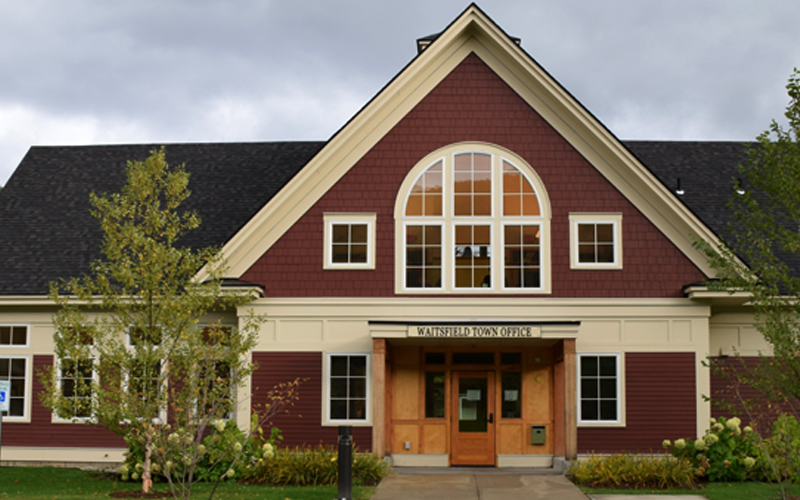A group of Mad River Valley residents came before the Waitsfield Select Board early this month to request that the board work with VTrans to improve pedestrian safety on Route 100 through the town, particularly on its current crosswalks.
Fayston resident Dr. Roger Porter told the board at its January 4 meeting that many people had been very concerned about pedestrian safety in Waitsfield well before this fall’s pedestrian fatality at the crosswalk on Route 100 by Carroll Road that took the life of Mariah McGill, Fayston.
Porter offered national stats on pedestrians killed in crashes, noting that a lot of cyclists are also killed. He pointed out that even after the crash that took McGill’s life, there had been no new paint on that particular crosswalk.
“We need to make Route 100 safer. We want to have image of small quaint community. Nobody wants pedestrian unfriendly situation. But many drivers pay no attention to crosswalks and the speed limit adds to this danger,” Porter said noting that statistical data showed that the faster people were driving the greater the incident of injury and death occurring.
He went on to note that the crosswalks are poorly marked, there are no speed bumps in Waitsfield, no stoplights and no flashing crosswalk signs. Further, he said that the current 30 mph speed limit was not helping matters.
He cited New York City which decreased its speed limit from 30 to 25 miles an hour in 2014 and decreased its pedestrian deaths by 50% from 2014-2019. Porter then noted that the way Vermont assesses appropriate speed limits for roads is to study how fast cars are currently traveling on the road. He called this 60-year-old system an outdated concept and noted that local state representative Kari Dolan would be introducing legislation that would remove state barriers from lowering speed limits from 30 to 25 miles an hour and prevent the state from raising it back up.
He turned the presentation over to Doug Stoehr, Fayston, who talked about recommendations from the group, including high intensity LED flashing light systems as blinking signs outlined with rapid flashing blinkers
Stoehr reported that in Vermont, pedestrian yield compliance improved from 53 to 80% after Quechee Gore installed the flashing lights in 2013.
“VTrans concluded that blinker systems have long-term benefits,” he said, offering some crosswalk pricing for the entire battery, LED, solar panel and battery systems, plus push buttons for pedestrians and mounting brackets. Per crosswalk price is $4,740 plus installation, which he said is likely to be less than $1,000. Finally, he noted that in 2019 Norwich received a VTrans grant for 50% of the cost of crosswalk upgrades including rapid flashing beacon systems like those he had just described.
Waitsfield planning commissioner Alice Peal reported that the local transportation advisory committee had discussed these issues as well as further traffic calming measures to slow traffic and the possibility to finding grant funding.
“This has been a conversation that we’ve been having as a select board. We’re aware of this issue and we have dealt with the state law that restricts our ability to change speed limits on our own roads. We’re also aware of the Bridge Street issue and have taken the initiative to increase the bump out on the Bridge Street side of the library corner to narrow the Bridge Street egress to one lane. The West Side sidewalk project is a huge step forward in terms of pedestrian safety and it’s going to bid,” said board member Jon Jamieson.
Jamieson said that he was aware that there had been some select board push back on some of the safety features of the West Side sidewalk and said that Joshua Schwartz, executive director of the Mad River Valley Planning District, had come up with alternatives to blinking lights.
“I think there are steps we can take before implementing those and, yes, we have committed to making changes. We’ll continue to work on safety,” he added.
Board member Brian Shupe suggested that the town ought to consider making structural changes to Route 100 to install traffic calming measures, including more sidewalks. He also noted that the town had, historically, talked about making Route 100 a Class 1 town highway which lets the town make its own decisions about the road, albeit with the added burden of paying to maintain and plow it.






